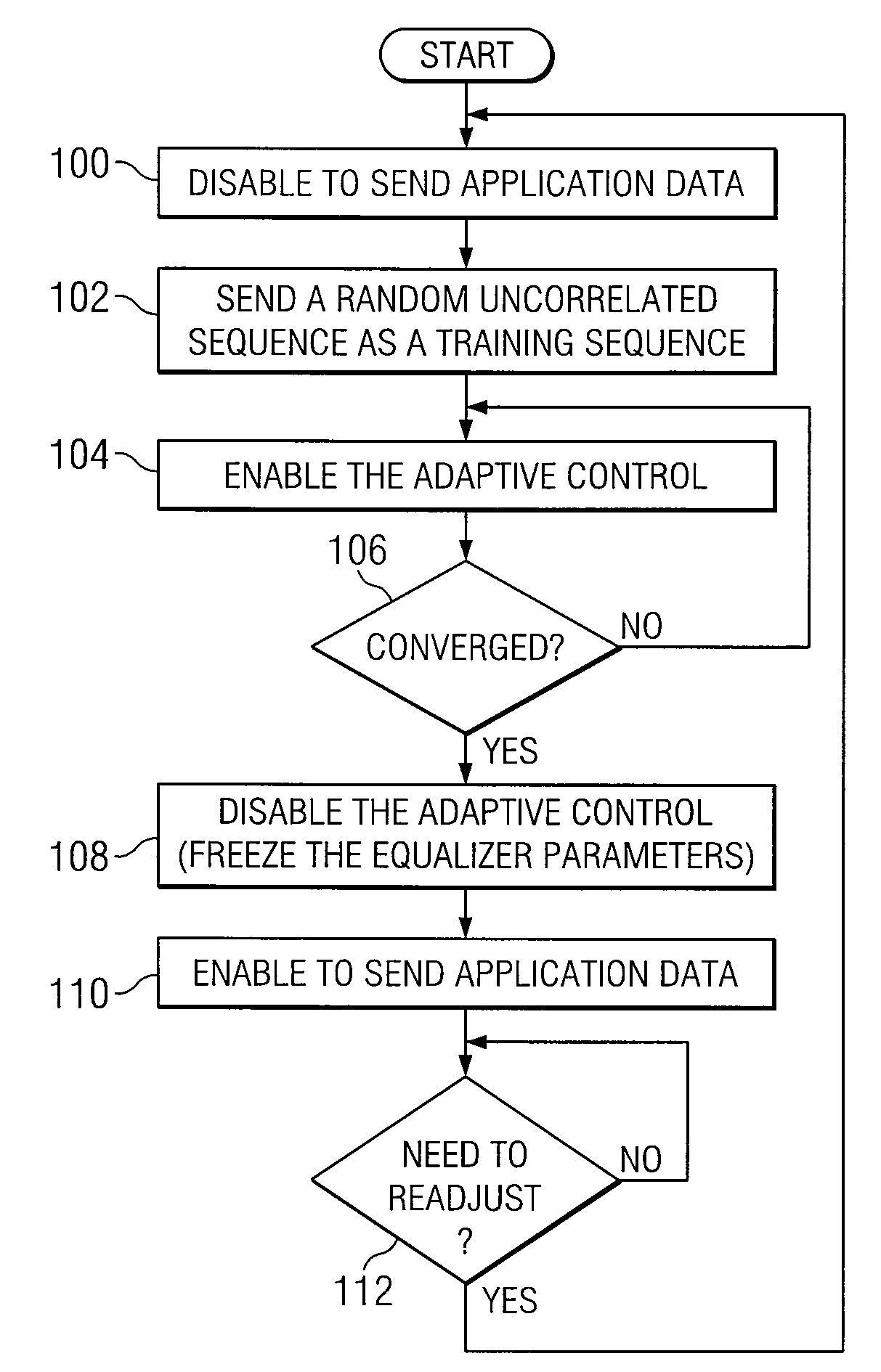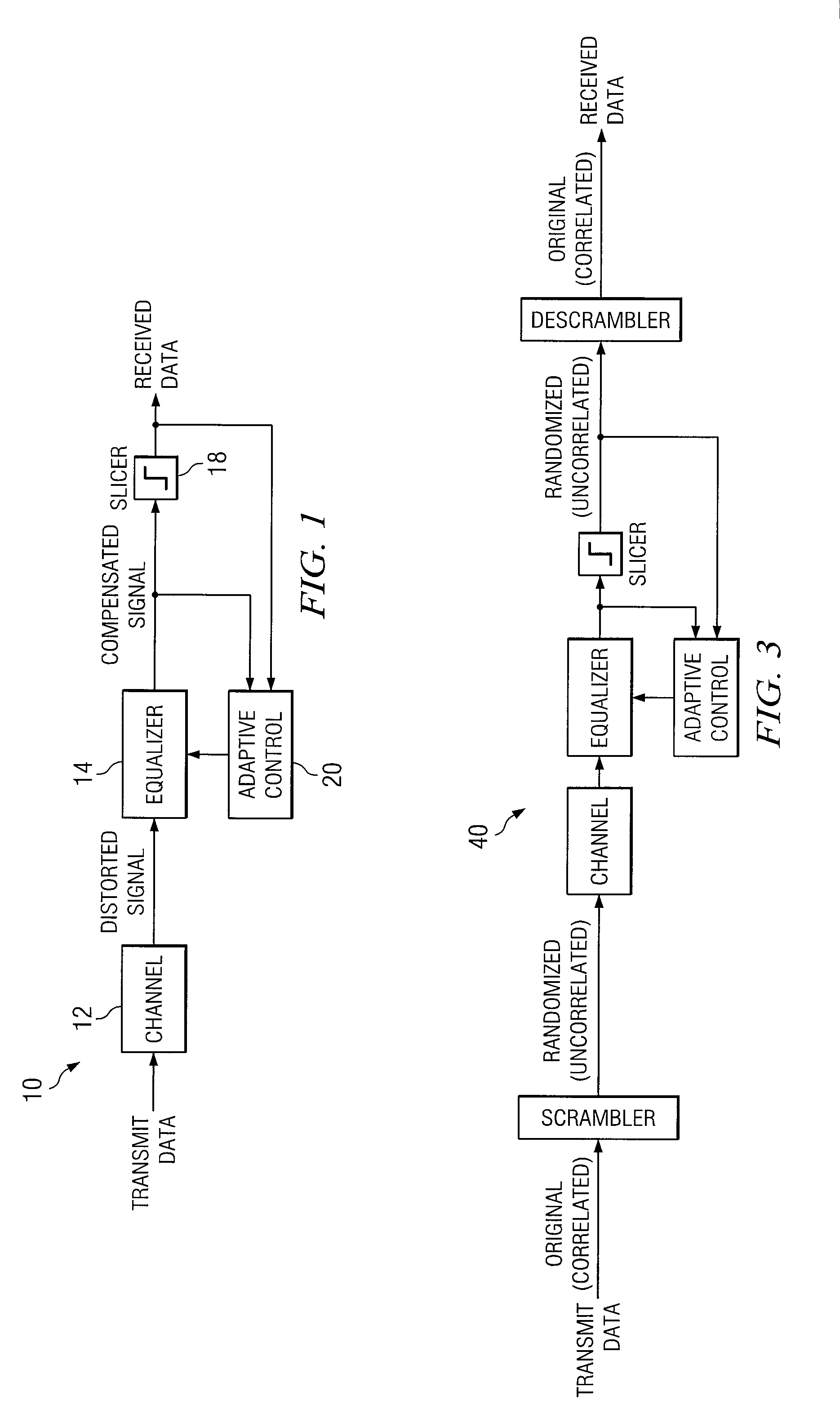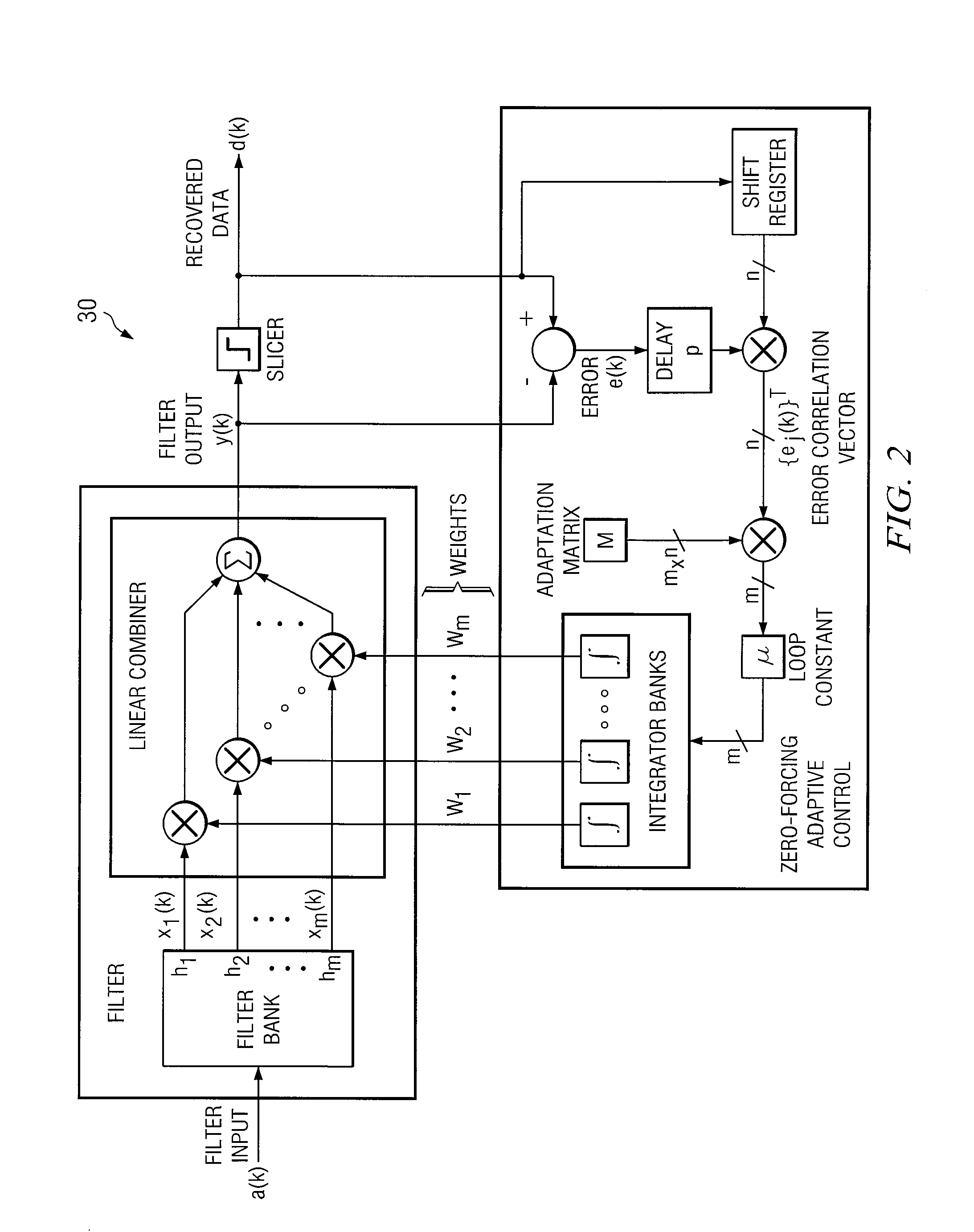Method and System for Static Data-Pattern Compensated Adaptive Equalizer Control
a technology of adaptive equalizer control and static data, applied in the field of data communication, to achieve the effect of reducing or eliminating at least some disadvantages
- Summary
- Abstract
- Description
- Claims
- Application Information
AI Technical Summary
Benefits of technology
Problems solved by technology
Method used
Image
Examples
Embodiment Construction
[0015]FIG. 1 is a simplified diagram illustrating a digital transmission system with an adaptive equalizer 10 related to one embodiment of the present invention. FIG. 1 includes a channel 12, an equalizer 14, a slicer 18, and an adaptive control 20.
[0016]A prior scheme of the adaptive equalizer control is the general Zero-Forcing (ZF) algorithm. Filter output y(k) is a linear weighted sum of tap outputs of the filter bank. Differences between the recovered data d(k) and the filter output y(k) yields an error signal e(k). Correlation between the error signal e(k) and the recovered data d(k) [with some delays] forms error correlation vector {ej(k)}T. The error correlation vector is multiplied with an adaptation matrix M and a loop constant μ, then it is integrated to generate the tap weights {Wi}T.
[0017]FIG. 2 is a simplified block diagram illustrating an adaptive equalizer 30 using the Zero-Forcing algorithm.
[0018]The general ZF algorithm can be defined, as follows:
y(k)=∑i=1mwi·xi(k)...
PUM
 Login to View More
Login to View More Abstract
Description
Claims
Application Information
 Login to View More
Login to View More - R&D
- Intellectual Property
- Life Sciences
- Materials
- Tech Scout
- Unparalleled Data Quality
- Higher Quality Content
- 60% Fewer Hallucinations
Browse by: Latest US Patents, China's latest patents, Technical Efficacy Thesaurus, Application Domain, Technology Topic, Popular Technical Reports.
© 2025 PatSnap. All rights reserved.Legal|Privacy policy|Modern Slavery Act Transparency Statement|Sitemap|About US| Contact US: help@patsnap.com



